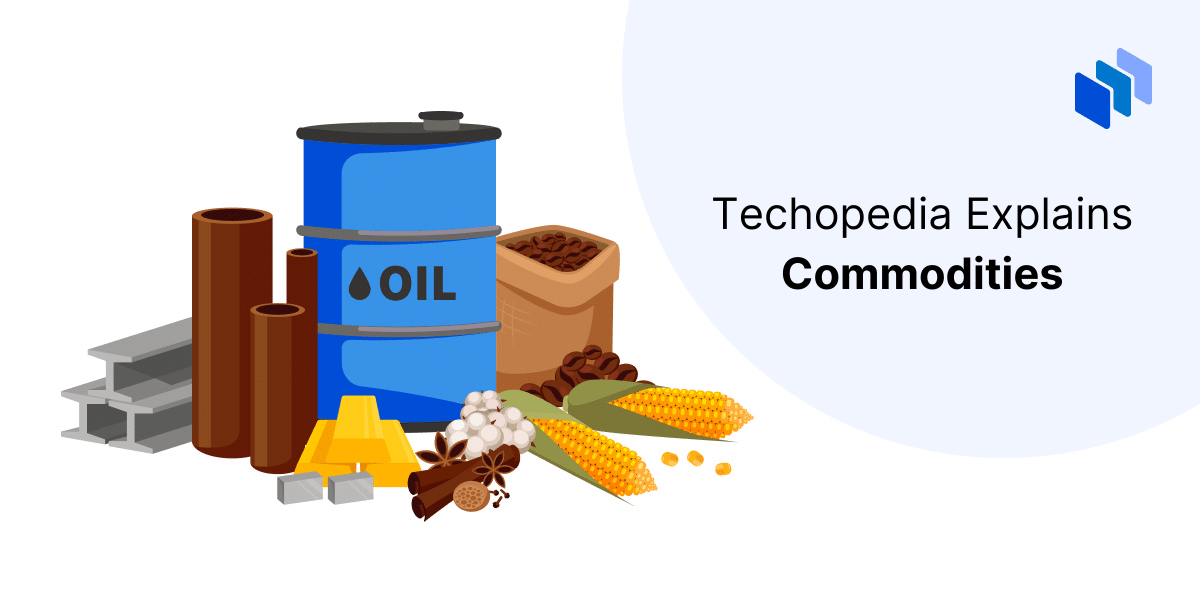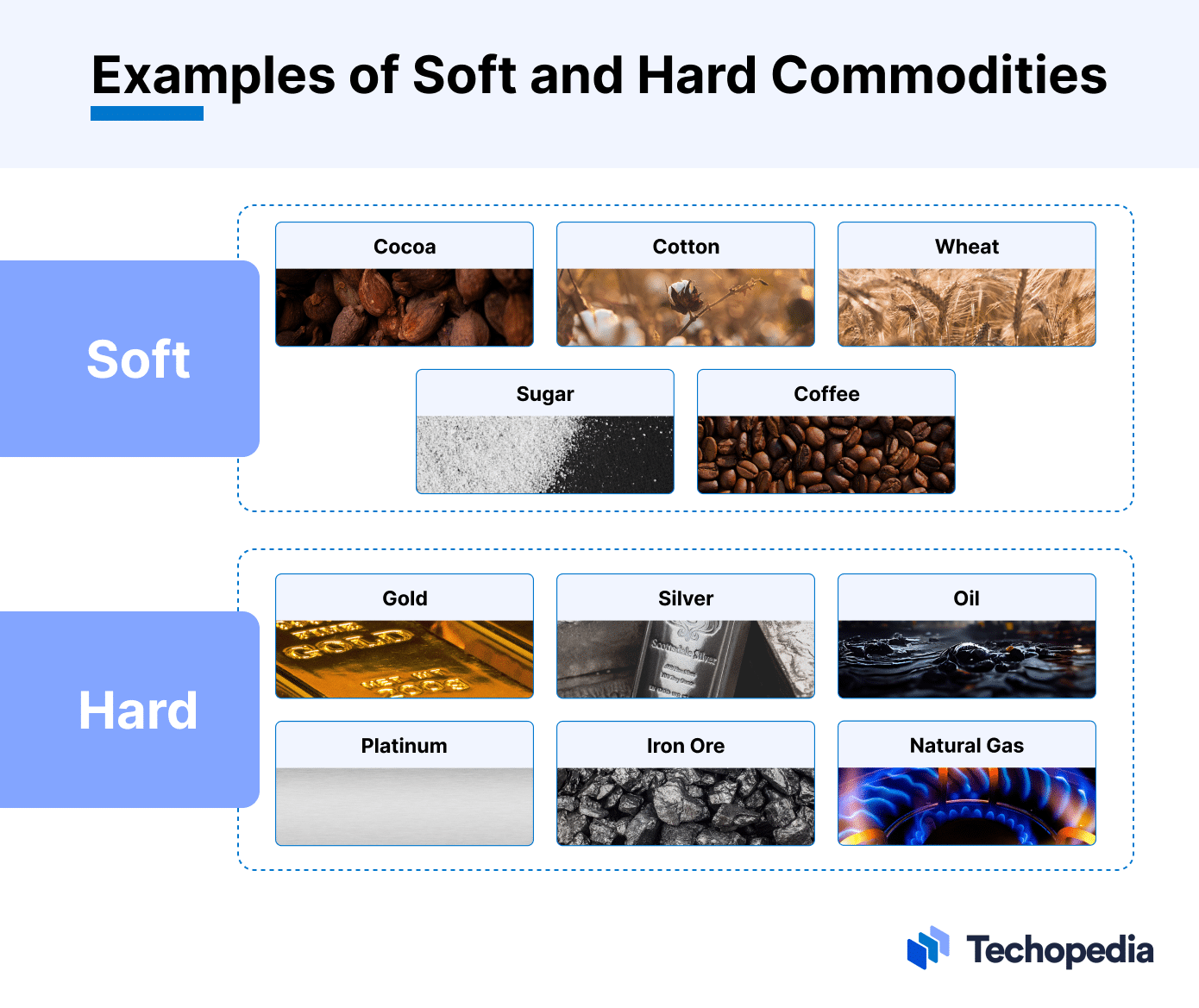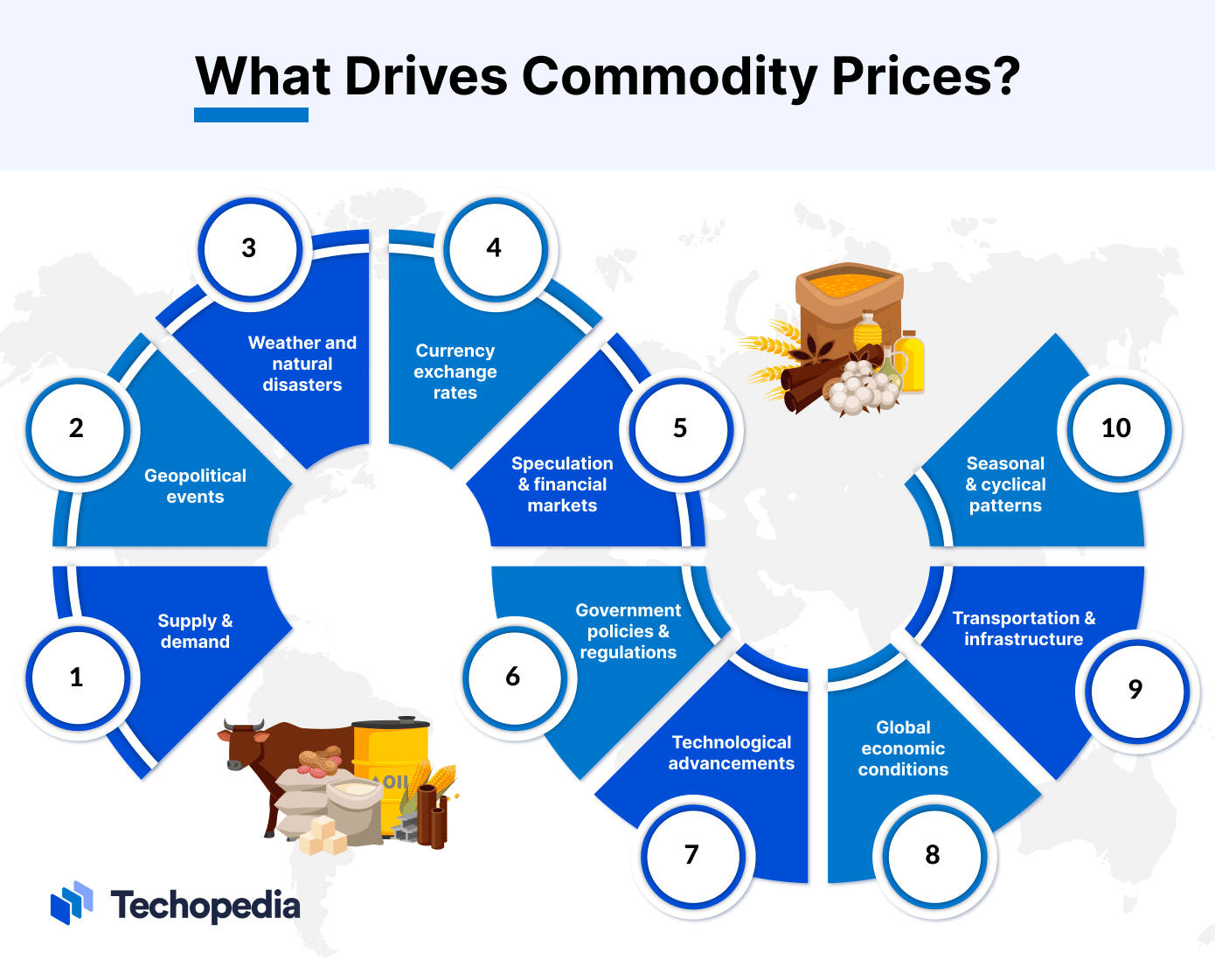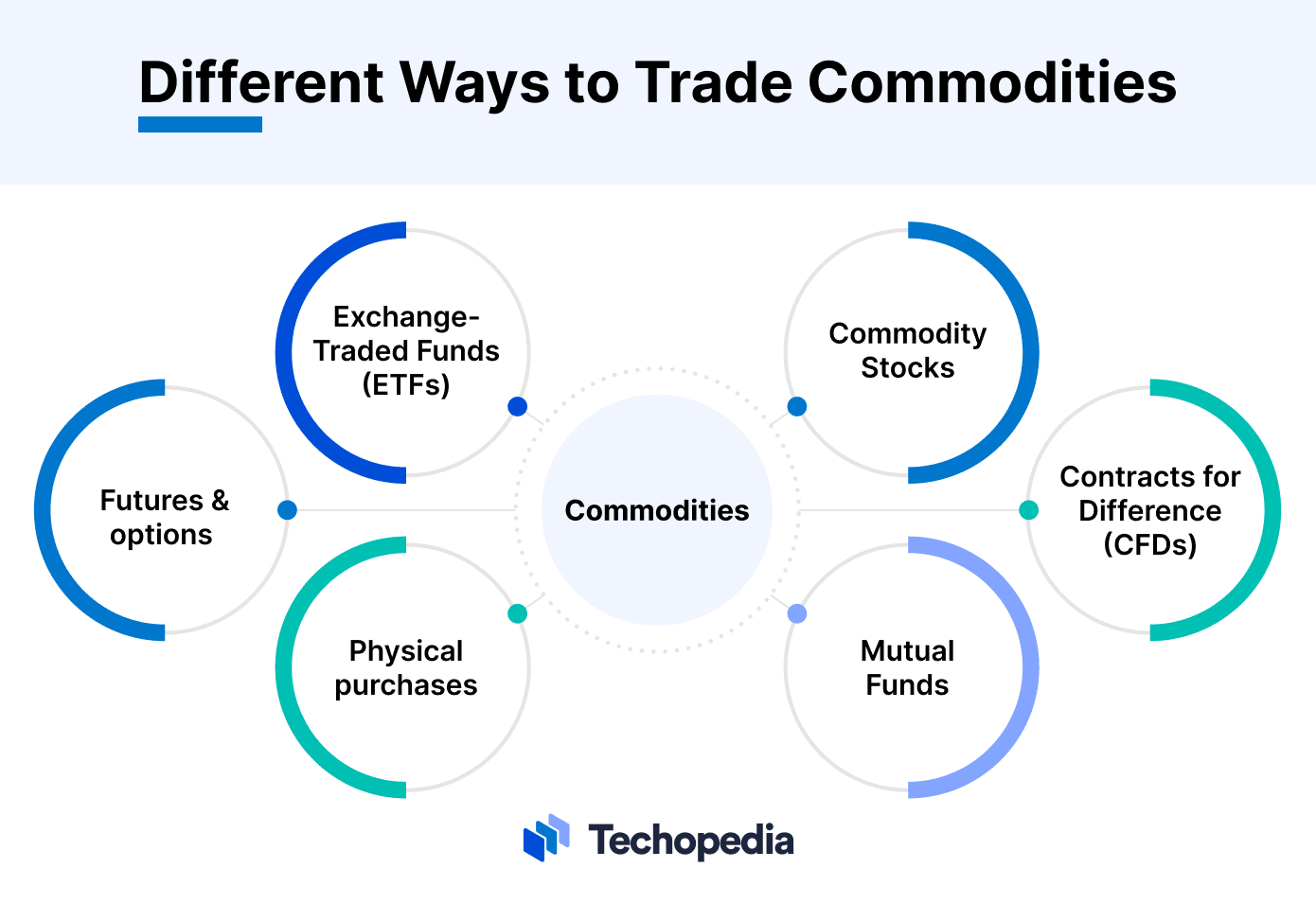What is a Commodity?
A commodity is a physical good that can be traded in a variety of exchanges or marketplaces. These can be metals, grains and other produce, oil and gas, livestock, and more.
Units of the same grade are interchangeable. For example, a barrel of Brent crude oil can be exchanged for another barrel of Brent, but not a barrel of WTI.
Usually, commodities are raw materials for the production of other goods and, as such, differ from finished goods or products. Much like stocks or bonds, they are another asset class that can be invested in and are often used as hedges against inflation. Investors also use them widely as alternative assets to diversify a portfolio.
However, to be traded on an exchange, most commodities need to meet certain eligibility standards and quality grades.
History of Commodity Markets
Commodity markets can be traced back to as early as between 4500 BC and 4000 BC, somewhere in Ancient Mesopotamia. Then, they were mostly characterized by barter trade, where livestock, gold, silver, and shells were amongst the items originally traded.
As more formalized markets began to emerge, gold and silver coins were preferred, with ancient Greek and Roman empires being some of the first to rely heavily on their complex trading mechanisms and establish widespread routes across the Far East and Europe.
In modern times, one of the earliest commodities markets established was the Chicago Board of Trade (CBOT) in 1848, which started by trading corn, wheat, and soybeans. Nowadays, it has a diverse range of products, such as U.S. Treasury bonds, silver, gold, and energy.
Commodity Types & Examples
Very broadly, commodities can be classified into two groups – hard and soft.
- Soft commodities are ones that are grown, such as agricultural produce like wheat or rice or livestock like cattle.
- Hard commodities are ones that are mined, such as metals or oil.
We can further categorize these into five major types, namely energy, metals, agricultural, industrial, and livestock.
- Energy: Crude oil and its variations, such as Brent and West Texas Intermediate (WTI), as well as natural gas, gasoline, and coal. Other fuels such as heating oil, ethanol, naphtha, uranium, propane, and methanol also come under energy commodities, as well as cheaper reference oil brands such as Urals oil.
- Metals: Precious metals and safe haven assets such as gold, silver, and platinum, as well as other key base and battery metals such as copper, steel, iron ore, lithium, and titanium.
- Agricultural: Crops such as wheat, rice, corn, rubber, oats, coffee, potatoes, tea, cotton, and more. This also includes processed goods such as sugar and orange juice and animal products such as milk, cheese, and butter. Edible oils such as canola, rapeseed, and sunflower oil are also agricultural commodities.
- Industrial: Industrial metals such as lead, tin, palladium, aluminum, zinc, nickel and cobalt, magnesium, rhodium, manganese, and tellurium. This also includes thermoplastics such as polypropylene, resins like polyethylene, and fertilizers such as urea ammonium, amongst others.
- Livestock: Feeder cattle, live cattle, beef, poultry, eggs, and salmon, amongst others.
How Do Commodity Markets and Exchanges Work?
The definition of commodity markets or exchanges are marketplaces where traders can buy, sell, or trade raw materials, such as wheat, gold, and oil. These exchanges are liquid and centralized.
We can further divide these into spot markets and derivative markets.
- Spot markets or physical markets are for immediate deliveries when buyers and sellers exchange commodities for cash.
- Derivatives markets, on the other hand, have instruments like futures, forwards, and options. Traders use them for delivery at a later date.
Both futures and forwards are contracts that make the holder accountable for buying or selling a particular commodity at a future date for a predetermined price.
- Futures are standardized contracts, tradeable on stock exchanges, and are marked-to-market every day.
- Forwards are unstandardized and traded over the counter and are not marked-to-market.
Options also provide the contract holder with the option of buying or selling a commodity at a specific price on a particular date in the future. However, unlike futures or forwards, which are binding contracts, in the case of options, the buyer is under no obligation to exercise the option.
In the U.S., one of the biggest commodity exchange examples is the CME Group, under which fall the Commodity Exchange, the Chicago Mercantile Exchange, the Chicago Board of Trade, and the New York Mercantile Exchange.
Who are Commodity Brokers?
Commodity brokers can be individuals or companies who buy or sell commodities contracts on their client’s behalf for commissions. Clients can be commercial, private, or both.
Financial clearing houses, investment banks, and commodity exchanges usually employ individual brokers. These brokers undertake a number of other responsibilities on behalf of their clients. This includes tracking global commodity performances, visiting suppliers, and scoping out business opportunities.
Other services they may provide are financial data interpretations, providing investment advice, and market recommendations.
Commodity brokerage firms may also offer access to derivatives or contracts in other asset classes. Amongst these, shares, cryptocurrencies, forex pairs, and indexes are the most common.
Recent years have also seen the rise of online brokers. These usually offer trading platforms with real-time data and technical indicators, brokerage accounts, free demo accounts, and learning courses. They also typically charge commission fees.
How to Trade Commodities
One can trade commodities in a number of ways. Experienced traders and institutional investors can usually either buy or sell them directly on an exchange, through either spot markets or futures, forwards, or options.
However, for novice or individual investors, gaining access to or tracking the dynamics of commodity prices may be a little harder, as they may require a brokerage account or specialized knowledge. Since commodities can also be more volatile than traditional investments such as stocks and bonds, they may also carry a higher risk.
These investors may prefer trading the shares of companies with a significant interest or exposure in certain commodities, such as mining or oil and gas companies since these also have a close relation to commodity prices.
Another indirect way is to use mutual funds to invest in shares of commodity companies. In cases where investors may want a little more direct exposure, commodity mutual funds are also an option.
Some examples of commodity mutual funds providing exposure to energy, industrial metals, precious metals, and agriculture are the BlackRock Commodity Strategies Fund (BICSX) and the Invesco Balanced-Risk Commodity Strategy Fund Class A (BRCAX).
Commodity Indexes
Commodity indexes are indexes that follow the prices of various commodities and their returns over a period of time. They can use either weighted average prices or fixed-weight prices and can be for both futures or spot prices.
Some examples include the Refinitiv/CoreCommodity CRB index, the London Metals Exchange (LME), and the S&P GSCI.
Commodity ETFs
An exchange-traded fund (ETF) is a kind of pooled investment security that follows a specific commodity, asset, index, or sector. Investors buy and sell ETFs on regular stock exchanges, just like normal stocks.
A commodity ETF follows precious metals, agricultural goods, or resources such as oil and gas. These can either be several commodities, through futures contracts, or a single one. The latter will usually be in physical storage, such as the LME’s warehouses. Some commodity ETFs may also follow an index.
These have a variety of derivative positions, as well as individual commodities.
Investors value commodity ETFs for their liquidity and role in hedging against inflation or diversifying a portfolio.
Crypto Commodities
Recently, the term commodities has expanded to include virtual currencies such as Bitcoin (BTC). The Commodities Exchange Act (CEA) now defines Bitcoin and other virtual currencies as commodities.
The US Commodity Futures Trading Commission (CTFC) oversees these. It also monitors whether traders are using virtual currencies in frauds in derivative contracts. Despite this, there is still an ongoing battle about whether cryptocurrencies should fall under securities or commodities in the U.S.
Crypto commodities are tradeable tokens based on an underlying commodity. This asset’s value is tokenized on a blockchain. Investors can trade these tokens wherever they are legal, just like cryptocurrencies.
However, they still come with their share of risks. These include a lack of regulation and guidelines. Several jurisdictions also refuse to recognize crypto commodities, making them illegal to trade.
The Bottom Line
Commodities are physical goods such as precious and industrial metals, agricultural goods, oil and gas, and livestock.
Investors can trade them through spot or derivatives markets by using forwards, futures, options, and ETFs. They can also choose to have indirect exposure to commodity markets by trading company shares.
Recently, the Commodities Exchange Act defined Bitcoin and other virtual currencies as commodities.









